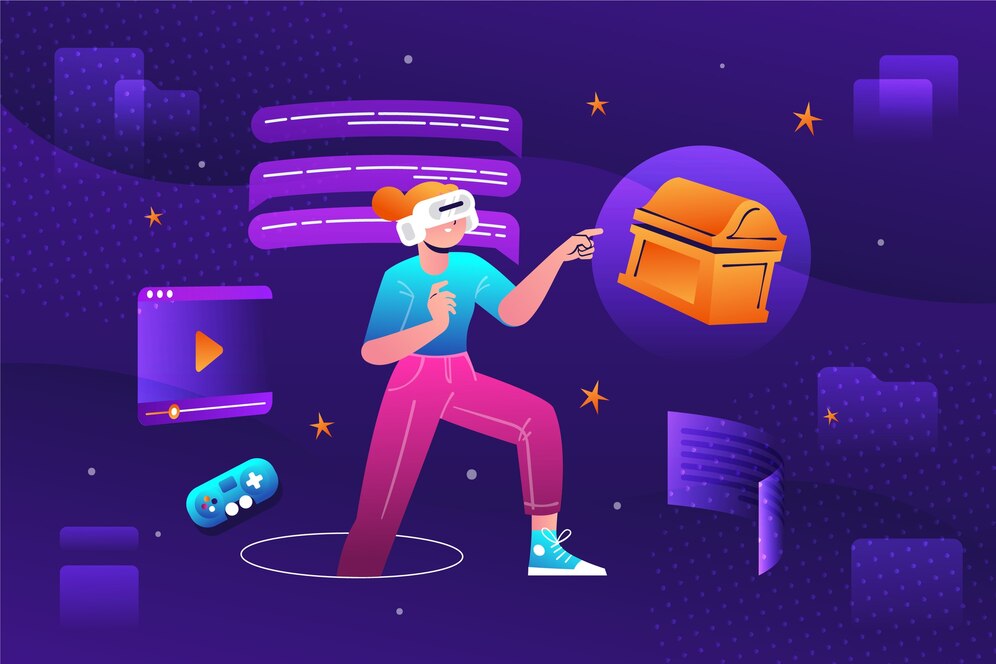Welcome to the complete guide to Web3 game development, where we delve into the exciting world of merging blockchain technology with gaming. In this article, we'll explore the fundamentals of Web3, its significance in game development, the tools and frameworks available, steps to get started, design considerations, development processes, challenges, successful examples, and future trends.
Introduction to Web3 Game Development
With the emergence of Web3 technology, the landscape of game development has evolved significantly. Web3 represents a decentralized internet infrastructure powered by blockchain technology, enabling new possibilities for developers to create innovative and immersive gaming experiences.
Understanding Web3 Technology
What is Web3?
Web3, often referred to as the "decentralized web," is a paradigm shift from traditional centralized web architecture to a decentralized one. It aims to give users more control over their data and digital identities by leveraging blockchain and cryptographic principles.
Key Features of Web3
- Decentralization: Elimination of intermediaries and centralized control.
- Transparency: Transparent and immutable record-keeping on the blockchain.
- Security: Enhanced security through cryptographic algorithms.
- Interoperability: Seamless interaction between different blockchain platforms.
The Importance of Web3 in Game Development
Web3 technology brings several advantages to game development, including:
- Ownership: Players have true ownership of in-game assets through NFTs.
- Interoperability: Seamless transfer of assets between different games and platforms.
- Monetization: New revenue streams through tokenization and decentralized finance.
- Community Engagement: Enhanced community participation through decentralized governance models.
Tools and Frameworks for Web3 Game Development
To embark on a journey into Web3 game development, developers need to familiarize themselves with various tools and frameworks:
Smart Contracts
Smart contracts, self-executing contracts with the terms of the agreement directly written into code, are essential for implementing game logic and asset ownership on the blockchain.
Decentralized Finance (DeFi) Integration
Integrating decentralized finance protocols allows developers to incorporate features such as token rewards, staking, and liquidity pools into their games, enhancing the economic model and player incentives.
Non-Fungible Tokens (NFTs)
NFTs enable the creation and ownership of unique digital assets, such as in-game characters, items, and land, fostering a thriving digital economy within Web3 games.
Steps to Get Started with Web3 Game Development
Embarking on a journey into Web3 game development requires the following steps:
Setting Up Development Environment
Install necessary development tools and blockchain infrastructure to begin building Web3 games.
Choosing the Right Blockchain Platform
Select a suitable blockchain platform that aligns with the requirements and goals of the game project, such as Ethereum, Binance Smart Chain, or Polygon.
Learning Solidity Programming Language
Solidity is the primary programming language used for writing smart contracts on Ethereum and other blockchain platforms, making it essential for developers to learn and master.
Designing Web3 Games
Designing Web3 games involves:
Gameplay Mechanics and Dynamics
Crafting engaging gameplay mechanics that leverage blockchain features while ensuring a seamless user experience.
Incorporating Blockchain Elements
Integrating blockchain elements such as asset ownership, decentralized governance, and token economics into the game design.
Development Process of Web3 Games
The development process includes:
Writing Smart Contracts
Developing smart contracts to define game rules, asset ownership, and interactions between players and the game environment.
Integrating NFTs and DeFi
Incorporating non-fungible tokens and decentralized finance components to enable asset tokenization, trading, and monetization within the game ecosystem.
Testing and Deployment
Thorough testing and deployment of the game on the chosen blockchain platform to ensure functionality, security, and scalability.
Challenges and Considerations in Web3 Game Development
Despite its potential, Web3 game development poses several challenges, including:
Scalability Issues
Blockchain scalability remains a significant concern, with limitations in transaction throughput and network congestion affecting the gaming experience.
Security Concerns
Securing smart contracts and player assets from vulnerabilities and exploits requires robust security measures and auditing processes.
User Adoption and Onboarding
Onboarding traditional gamers to Web3 games may pose challenges due to unfamiliarity with blockchain technology and the complexities of wallet management.
Examples of Successful Web3 Games
Several Web3 games have gained popularity and success, demonstrating the potential of blockchain in gaming, including Axie Infinity, Decentraland, and Gods Unchained.
Future Trends in Web3 Game Development
The future of Web3 game development holds exciting possibilities, including:
- Metaverse Integration: Seamless integration of virtual worlds and social experiences.
- Cross-Platform Compatibility: Enhanced interoperability between different gaming platforms and ecosystems.
- Emergence of DAOs: Decentralized autonomous organizations governing in-game economies and communities.
Conclusion
Web3 game development represents a paradigm shift in the gaming industry, offering new opportunities for innovation, ownership, and community engagement. By leveraging blockchain technology, developers can create immersive and decentralized gaming experiences that empower players and redefine the future of gaming.





Comments